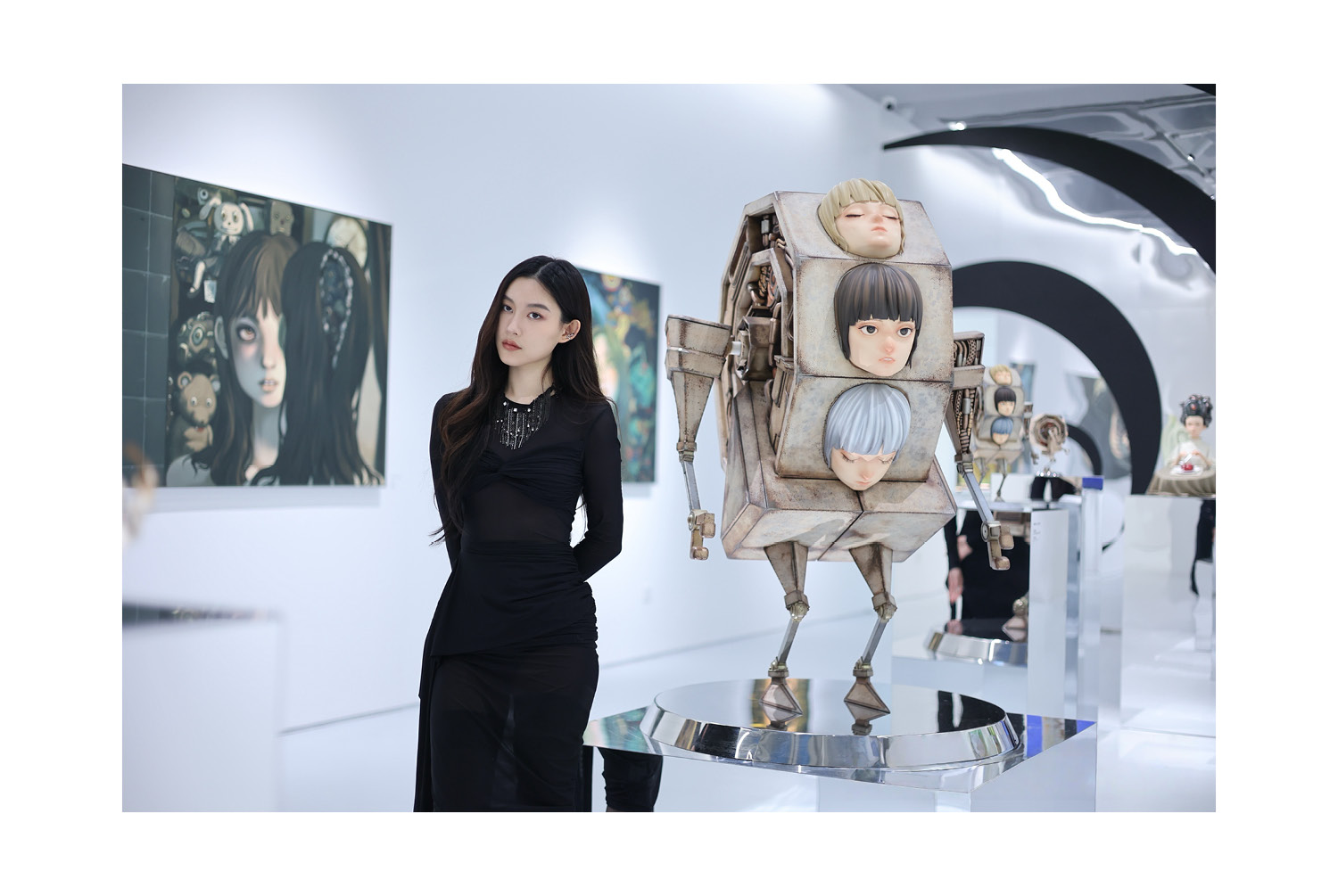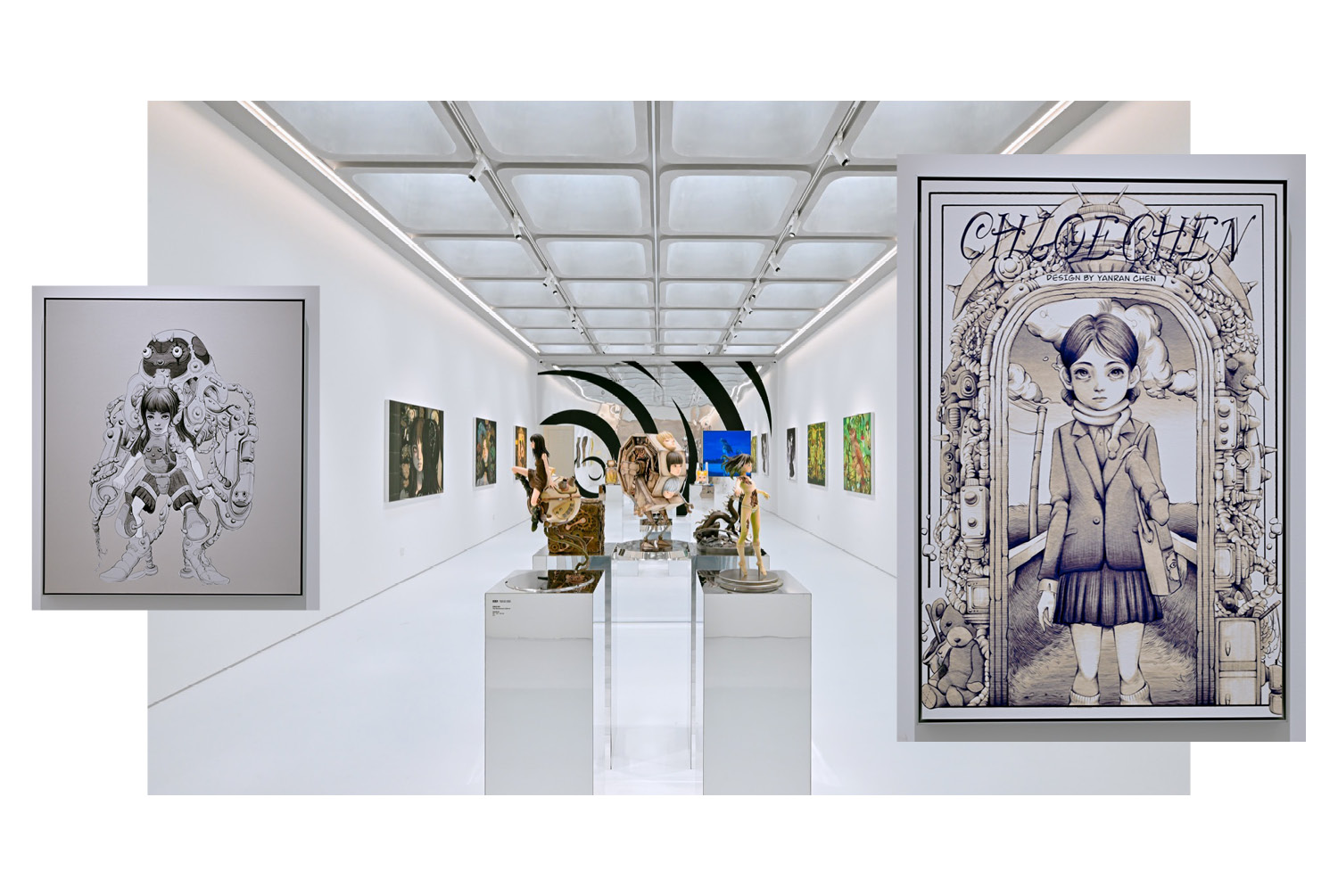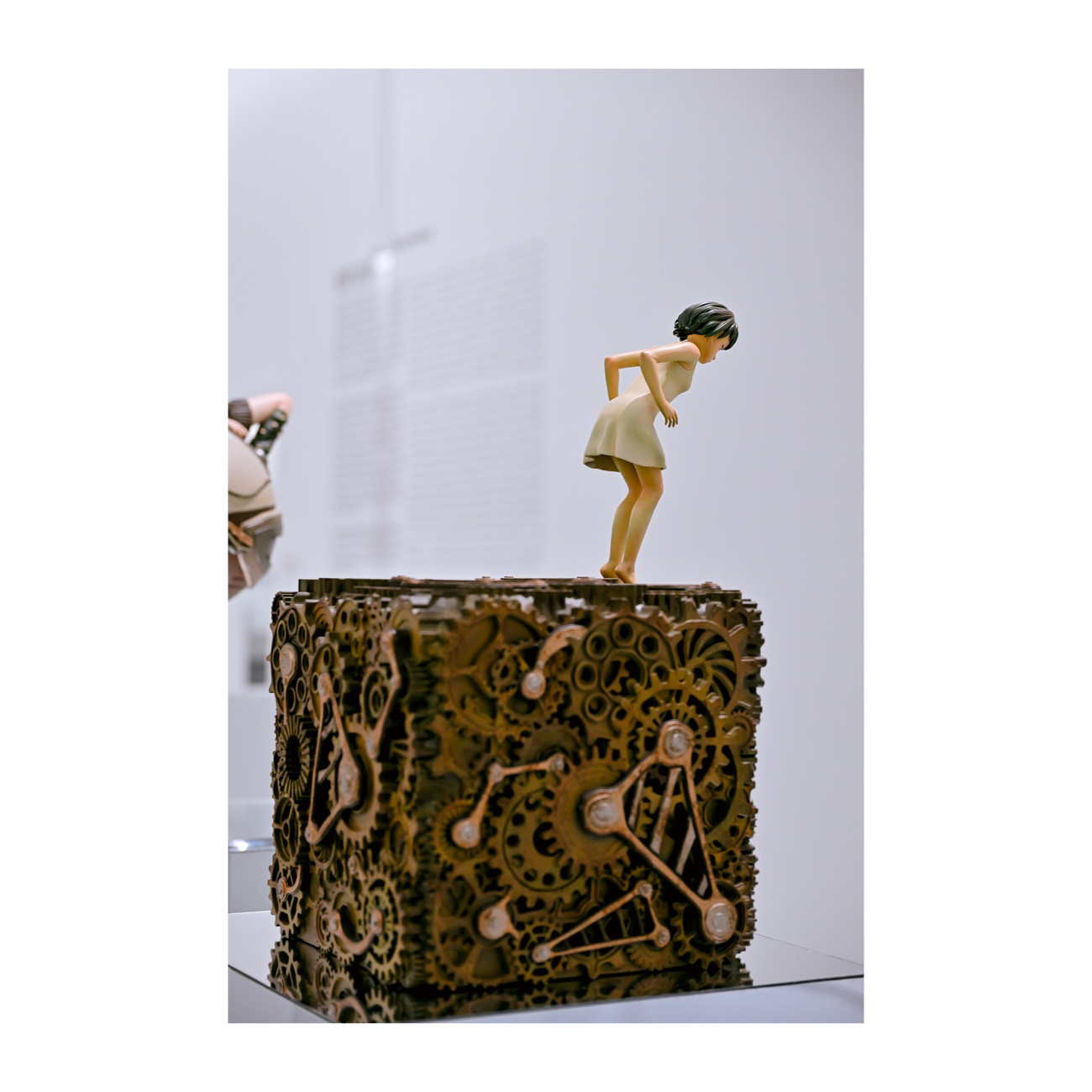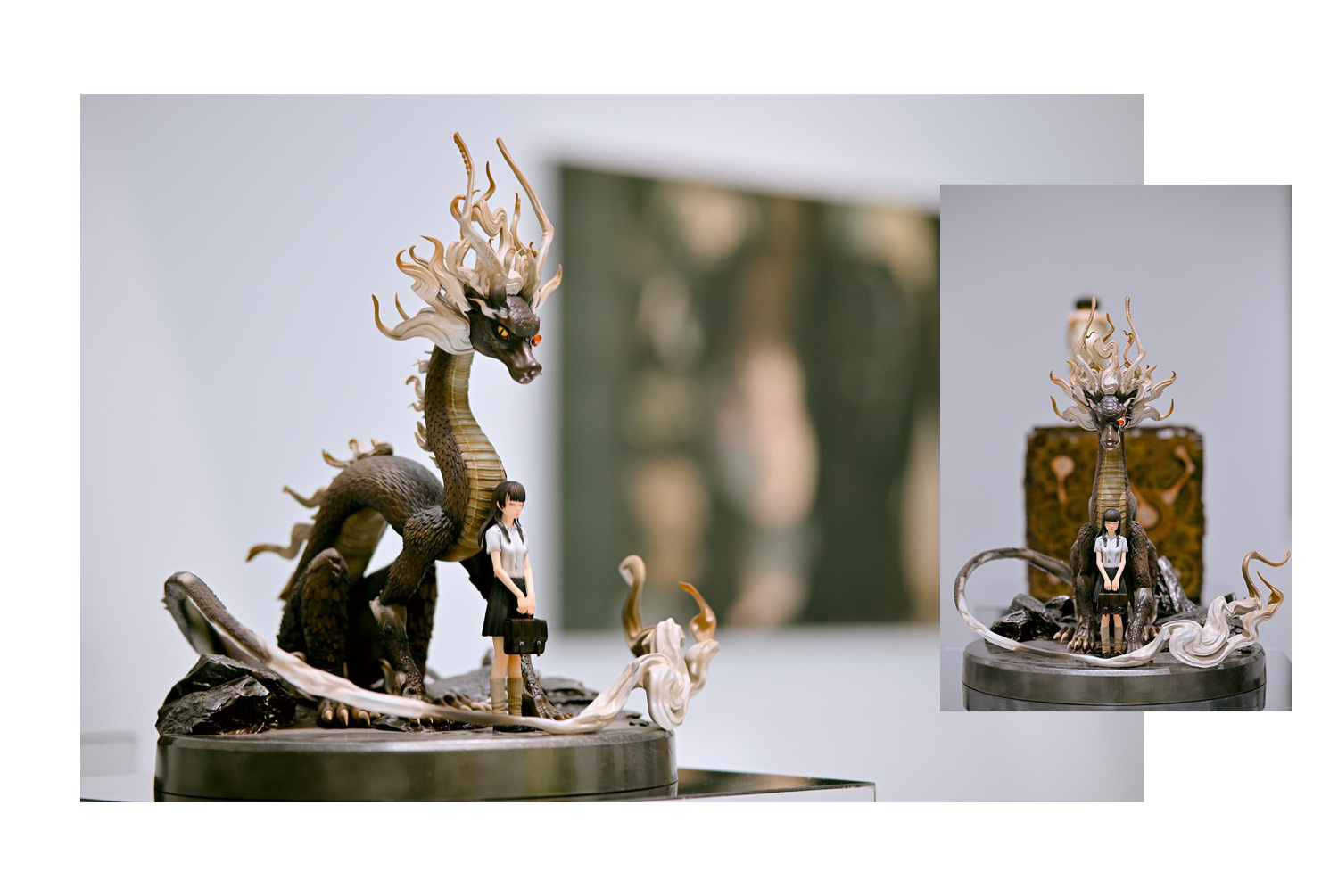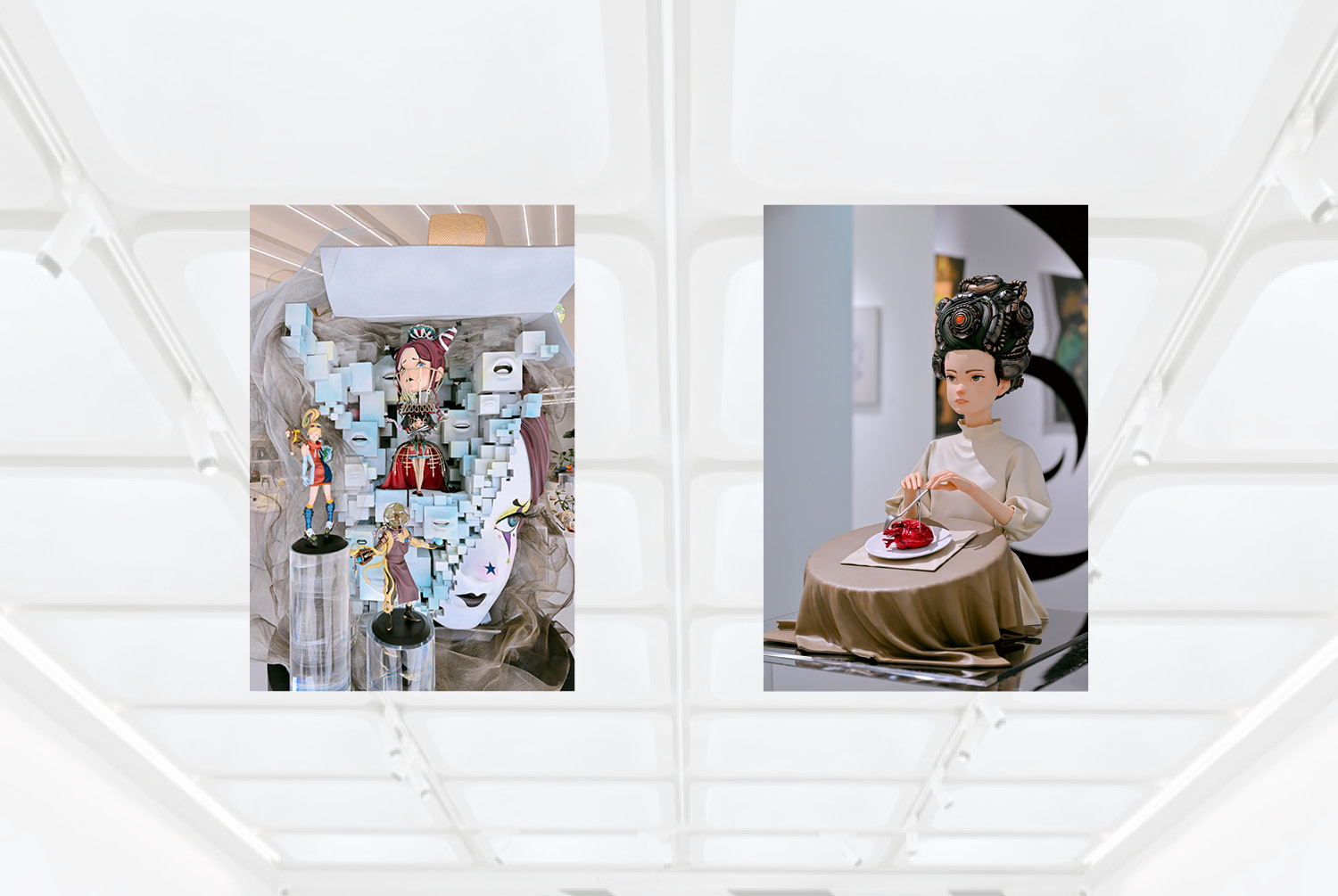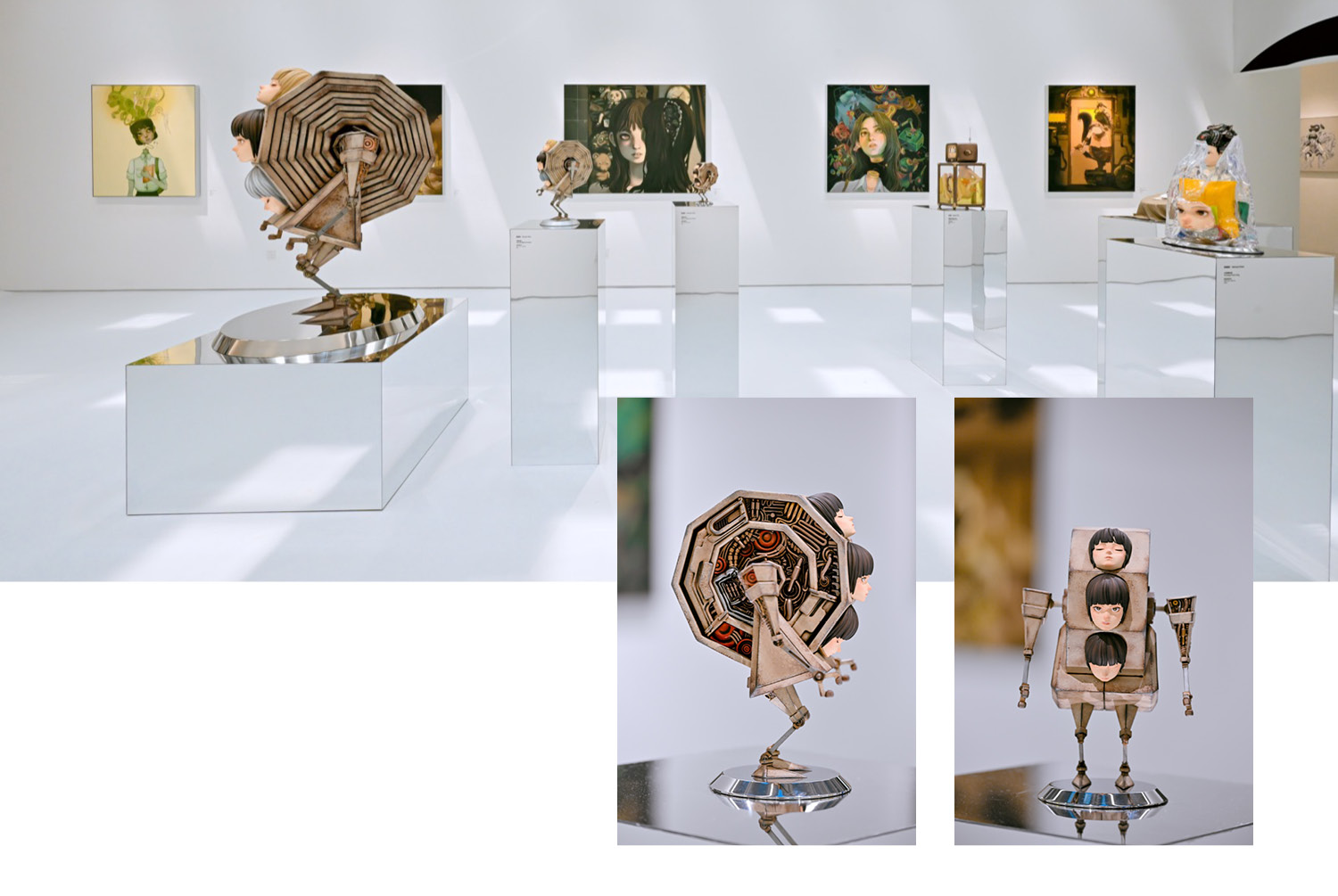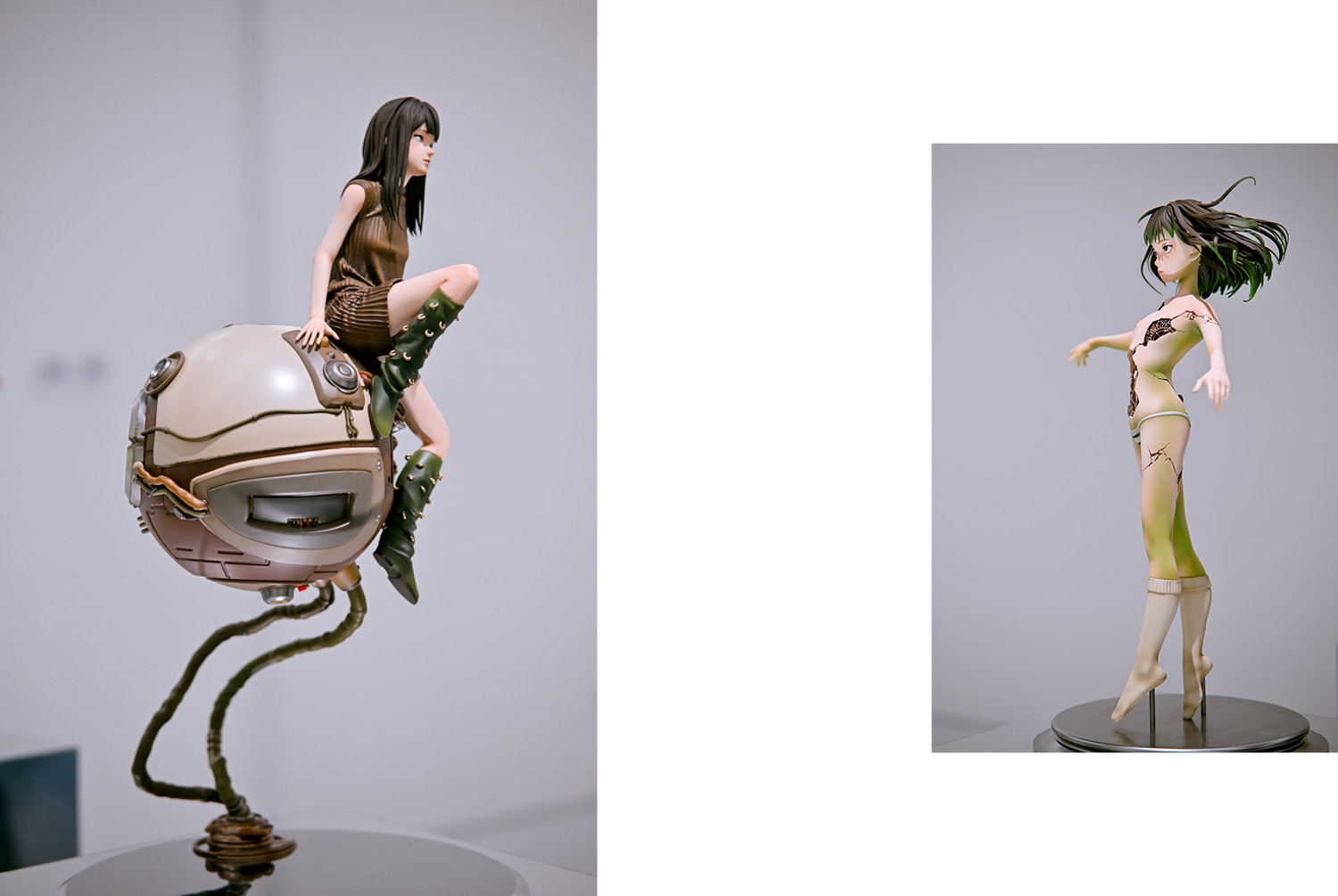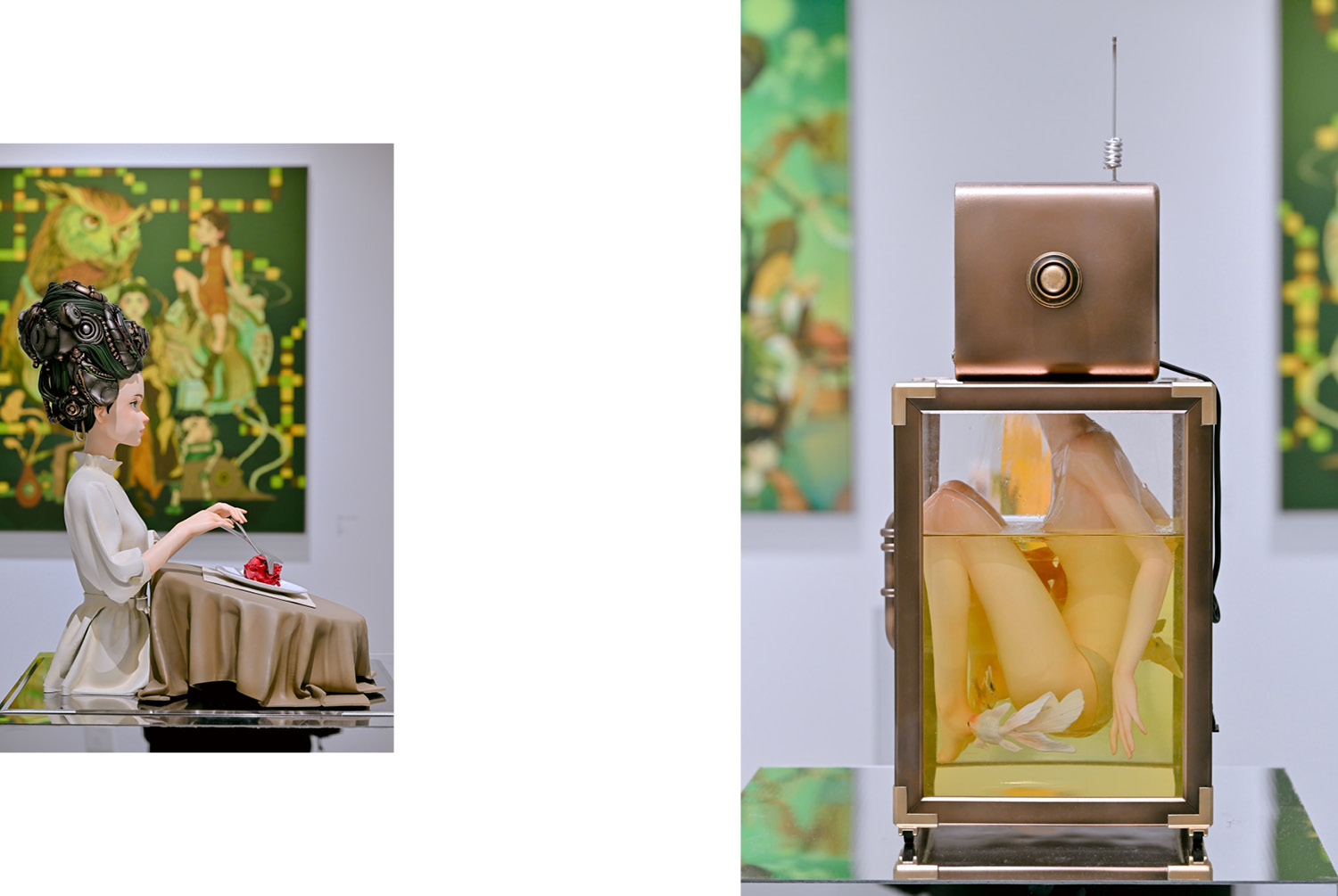Throughout the exhibition, recurring visual motifs surface like echoes: owls, alarms, clocks, mechanical limbs, emotional symbols, fragments of time and feeling caught in flux. In interviews, Chen has spoken about her fascination with time: how it moves through the body, how it distorts in dreams, under technology, or in the grip of grief. Her work taps into a shared vertigo, the digital overwhelm, the craving for something slower, something real.
But this vertigo isn’t disorientation for its own sake, instead it’s a quiet revolt, a refusal to glide numbly through the hyper-speed rhythms of the present. Serving as a call to pause, to locate stillness within chaos, to recover what pulses beneath the static. Her art becomes a mirror for our restless age, where moments fracture, memories flicker, and reality feels both hyper-connected and strangely hollow.
In this Neon Dreamspace, time cannot pass by in a traditional sense, instead it warps, loops and collapses in on itself. Chen’s world defies linear logic. The viewer floats, suspended in emotional latency, where no single moment is fixed and no version of the self is final. Her work suggests that we’re always in-between versions of ourselves, between the past and some speculative future, between the physical and the digital.
She invites us to confront the fractures between body and machine, presence and absence, memory and invention. Her figures and objects feel halfway into something else, transforming, glitching, recomposing. They vibrate with a strange tenderness, a kind of wounded hope. And in doing so, they ask: What does it mean to feel, to remember, to connect, when the tools that promise connection are the same ones eroding intimacy?
In Neon Dreamland, the surreal collides with the intimate, to soften the edges of reality, a portal into feeling and reflection, into the beautifully unstable process of becoming. Chen opens a world where we can drift inward, touch what’s tender, and remember what it means to be alive.
 https://www.nastymagazine.com/wp-content/uploads/2025/03/h0a5469.jpg
1066
1600
Editor Nasty
https://www.nastymagazine.com/wp-content/uploads/2015/02/new-logo-basker-WHITE4.png
Editor Nasty2025-03-26 16:51:362025-03-26 20:09:04Atmosfere / Gian Maria Tosatti
https://www.nastymagazine.com/wp-content/uploads/2025/03/h0a5469.jpg
1066
1600
Editor Nasty
https://www.nastymagazine.com/wp-content/uploads/2015/02/new-logo-basker-WHITE4.png
Editor Nasty2025-03-26 16:51:362025-03-26 20:09:04Atmosfere / Gian Maria Tosatti
